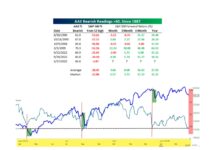Historically, virtual reality (VR) has been associated with costly, clunky hardware, limited to gaming. Yet the story is quickly changing as friction points in the user experience get smoothed over, and economics become more favorable.
In a survey conducted by VR Intelligence, approximately 46% of respondents cited lack of content as a key barrier to mass adoption of virtual reality (VR). This was followed by hardware size/design and lack of consumer awareness.
There are many companies moving quickly to establish a presence in the VR landscape such as Microsoft, Samsung, and Facebook. Use cases are slowly expanding, and ecosystems are coming to life, similar to the early days of the smartphone.
Investments in core virtual reality products are critical, but the surrounding infrastructure is just as important. For example, when it comes to content and use cases, a strong developer ecosystem will be key.
Going forward, it will be interesting to see which companies hold leading products, but also enable further virtual reality adoption by serving as platforms.
Twitter: @_SeanDavid
The author or his firm may have positions in mentioned securities at the time of publication. Any opinions expressed herein are solely those of the author, and do not in any way represent the views or opinions of any other person or entity.







